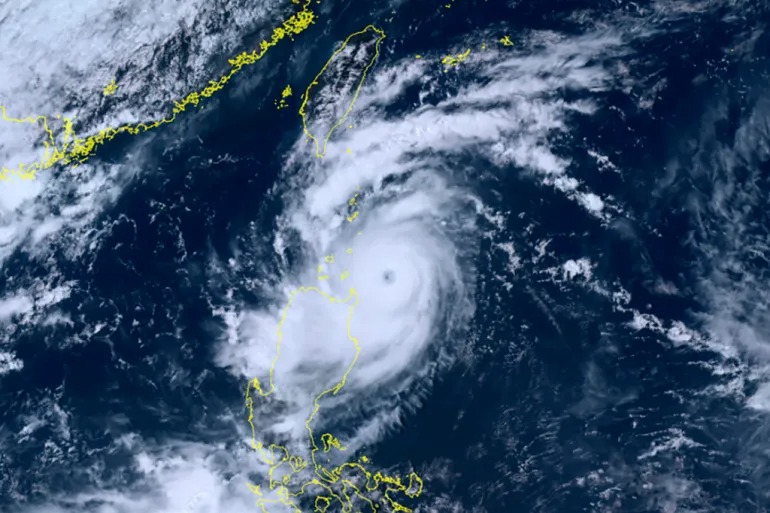In a preemptive move to safeguard its residents and infrastructure, Hong Kong has taken decisive action by grounding flights, shutting down its stock market, and closing schools as super Typhoon Saola intensifies its approach towards China’s southern coast. The city issued a T8 threat warning, the third-highest on its warning scale, in the early hours of Friday, throwing the bustling metropolis into a state of emergency. With Saola’s wind speeds clocking in at a staggering 205 kilometers per hour (127 miles per hour), this impending natural disaster has prompted authorities to warn of the possibility of severe flooding in low-lying coastal areas and advised the public to stay away from shorelines.
Hong Kong Issues T8 Threat Warning as Saola’s Fury Approaches
As Saola came within 230 kilometers (142 miles) east-southeast of Hong Kong, the city’s observatory sounded the alarm. According to the observatory, the weather is expected to “deteriorate rapidly” throughout the day, raising concerns about widespread flooding. While a direct hit on Hong Kong is rare, the observatory has not ruled out the possibility of elevating the tropical cyclone warning signals as the evening progresses. Major airlines, including Cathay Pacific and HK Express, have canceled numerous flights to and from Hong Kong to ensure the safety of travelers.
China Prepares for Saola’s Landfall with Highest Typhoon Warnings
Authorities on China’s mainland have not taken Saola lightly, issuing the highest typhoon warning for the storm. State media has indicated that Saola is expected to make landfall along coastal areas stretching from Huilai to Hong Kong on Friday afternoon or evening. In Guangdong province, a windstorm emergency level I, the highest emergency response level, has been declared. China’s National Meteorological Centre has issued a red alert, the most serious level in its four-tier warning system. Precautionary measures are in full swing, with more than 100,000 people relocated in eastern China’s Fujian province ahead of the typhoon’s arrival. Additionally, China Railway Guangzhou Group suspended nearly 4,000 trains between Thursday and Sunday to minimize potential risks.
Multiple Cities Take Precautionary Measures as Typhoon Haikui Looms
Simultaneously, Hong Kong and its neighboring regions face a double threat, as Typhoon Haikui looms on the horizon. This second typhoon is currently approaching Taiwan and is projected to make landfall on the northern part of the island on Sunday, with subsequent plans to head towards the eastern Chinese city of Fuzhou. In response, several cities have delayed the start of the school year as a precautionary measure. To prepare for Saola’s impact, China’s transport ministry has deployed 16 rescue-and-salvage ships and nine rescue helicopters to areas in the storm’s path.
Southern China has historically been vulnerable to typhoons during the summer and autumn seasons. These storms, originating in the warm oceans east of the Philippines, frequently cause temporary disruptions in cities like Hong Kong and Macau. However, advancements in building codes and flood management systems have significantly reduced the occurrence of fatalities in recent years. As Saola and Haikui continue to menace the region, the combined efforts of local authorities, emergency services, and residents are essential in minimizing the potential devastation and ensuring the safety of those in their path.
















